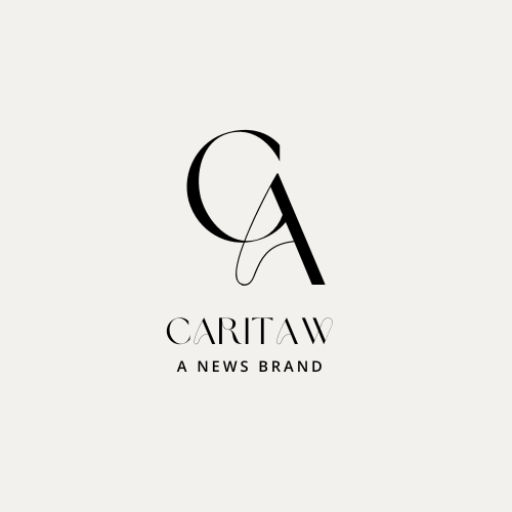
The modern world is witnessing an unprecedented surge in demand for futuristic tools that seamlessly integrate into our daily routines. From artificial intelligence-powered assistants to smart home devices and wearable technology, consumers are increasingly embracing innovative solutions that promise convenience, efficiency, and enhanced quality of life. This technological revolution represents more than just a trend—it signifies a fundamental shift in how people interact with their environment and manage their daily activities.
The Scale of Consumer Demand
The numbers tell a compelling story about the explosive growth in futuristic technology adoption. The global smart home market is projected to reach $250.6 billion by 2029, growing at an annual rate of 9.55%. Meanwhile, wearable technology is experiencing even more dramatic expansion, with the market expected to grow from $70.30 billion in 2024 to $152.82 billion by 2029. These figures reflect not just market potential but actual consumer behavior driving unprecedented demand.
Consumer Internet of Things (IoT) devices represent another major growth area, with the market projected to reach $555.92 billion by 2030, expanding at a CAGR of 12.7%. Perhaps most remarkably, 44% of Americans now own wearable health tracking devices, demonstrating how quickly futuristic tools have transitioned from novelty items to essential lifestyle accessories.
Key Drivers Behind the Demand Surge
Convenience and Time-Saving Solutions
The primary driver behind increased demand for futuristic tools is consumers’ desire for convenience and time optimization. Research reveals that 43% of consumers purchase technology primarily for entertainment and fun, followed by 27% who buy it because it’s cool, exciting, and new. This emotional connection to technology extends beyond mere functionality—consumers seek tools that simplify their lives while providing engaging experiences.
Smart home devices exemplify this trend perfectly. 64% of respondents have embraced smart technology in their homes, with convenience (53%), energy efficiency (39%), and security (34%) being the top motivating factors. These devices transform routine tasks into automated processes, freeing users to focus on more meaningful activities.
Health and Wellness Focus
The growing emphasis on personal health and wellness has significantly boosted demand for futuristic health monitoring tools. Wearable devices now provide comprehensive health insights, tracking everything from heart rate and sleep patterns to blood oxygen levels and stress indicators. The use of remote patient monitoring doubled between 2019 and 2022, with 305 healthcare practices using it to track patient metrics at home.
This health-focused adoption pattern reflects a broader societal shift toward preventive healthcare and personalized wellness management. Consumers increasingly view wearable technology not as luxury items but as essential tools for maintaining their health and well-being.
Work-Life Integration
The rise of hybrid work models and digital transformation has created strong demand for workplace automation tools. 60% of U.S. employees believe automation will make their jobs more interesting, while organizations are investing heavily in technologies that enhance productivity and streamline operations.
Personal assistant robots represent a particularly fascinating growth area, with the market expected to expand from $3.9 billion in 2025 to $7.7 billion by 2030. These devices are increasingly being integrated into both residential and commercial settings, handling everything from scheduling and communication to security and entertainment.
Technological Categories Driving Demand
Artificial Intelligence and Machine Learning
AI-powered tools have become central to the futuristic technology landscape. 71% of leaders are more likely to hire a less experienced candidate with generative AI skills than a more experienced candidate without them, highlighting how quickly AI proficiency has become valuable in the job market like tesla.
AI integration spans numerous daily life applications, from smart email filters and automated responses to predictive health monitoring and personalized content recommendations. The technology’s ability to learn and adapt to individual user preferences makes it particularly appealing to consumers seeking personalized experiences.
Smart Home Ecosystem
The smart home market represents one of the most visible manifestations of futuristic tool adoption. Household penetration will be 77.6% in 2025 and is expected to hit 92.5% by 2029, indicating that smart home technology is rapidly becoming standard rather than exceptional.
Smart speakers and voice assistants have reached particular maturity, with around half of all consumers owning these devices. Smart home security devices follow closely behind, with around one-third of respondents owning them and another 14% planning to purchase them.
Wearable Technology Evolution
Wearable technology has evolved far beyond simple fitness tracking to encompass comprehensive health monitoring, communication, and even augmented reality capabilities. The technology now includes smartwatches, fitness trackers, smart clothing, and emerging innovations like smart rings and AR glasses.
Consumer interest in IoT devices is growing rapidly, driven by technological advancements and greater awareness of the benefits these devices provide. The integration of AI with wearables has created devices capable of providing predictive health insights and personalized recommendations.
Augmented and Virtual Reality
AR and VR technologies are experiencing significant growth, with the combined market expected to exceed $100 billion in 2025 and reach $200.87 billion by 2030. Mobile AR usage is particularly explosive, with active mobile AR users worldwide expected to exceed 2 billion by 2025.
The retail sector has been particularly aggressive in AR adoption, with 80% of retailers planning to incorporate AR into their customer engagement strategy by 2025. Consumers using AR for virtual try-ons are 25% less likely to return purchases, addressing the $550 billion product returns problem.
Demographic and Regional Patterns
Generational Differences
Younger demographics lead technology adoption, but interesting patterns emerge across age groups. 84% of 18-24-year-olds and 81% of 25-34-year-olds have smart tech in their homes, compared to 49% of those aged 55-64. However, older adults show significant interest in specific categories, with security and energy efficiency being primary concerns.
Notably, Black and Latine consumers are wearable leaders, with higher odds of owning wearable devices compared to their non-Hispanic white counterparts. This challenges assumptions about technology adoption patterns and highlights the diverse nature of consumer demand.
Geographic Variations
Regional differences in adoption reveal interesting patterns. London leads in smart tech ownership with 78% of respondents having devices in their homes, followed by the North East (71%) and Northern Ireland (70%). North America currently holds the largest market share for wearable technology at 38.6% in 2021, though Asia Pacific is expected to witness the highest growth rates.
Income and Education Factors
Higher income brackets show greater current ownership across all device categories, but lower and mid-income levels represent more of the future purchasing intentions. This suggests a “catch-up” effect where technology adoption eventually spreads across income levels as prices decrease and functionality improves.
Barriers to Adoption and Solutions
Cost Considerations
Despite growing demand, cost remains a significant barrier. 48% of 18-24-year-olds and 46% of 25-34-year-olds find smart tech too expensive. However, decreasing costs of IoT devices and sensors are making these technologies more accessible, encouraging wider adoption.
Privacy and Security Concerns
37% of non-adopters cite mistrust of technology as their primary barrier to smart home adoption. This concern extends to wearable devices and AI-powered tools, where data privacy and security are major considerations. Companies are responding by implementing enhanced privacy measures and transparent data usage policies.
Usability and Integration Challenges
Compatibility issues persist as a barrier to widespread adoption. However, the development of standardized protocols and improved user interfaces is addressing these concerns. The integration of voice control and AI-powered automation is making devices more intuitive and user-friendly.
The Future Landscape
Emerging Technologies
Several emerging technologies are poised to drive the next wave of demand. Neuromorphic computing, quantum computing, and advanced robotics represent the cutting edge of futuristic tools. These technologies promise to solve increasingly complex problems and provide capabilities that seem almost magical to today’s users.
Workplace Transformation
The future of work will be marked by continued automation and AI integration. Hyper-automation extending beyond individual tasks to integrate AI across entire workflows represents the next frontier. This trend will create demand for more sophisticated personal productivity tools and workplace assistants.
Sustainable Technology Focus
Environmental consciousness is driving demand for sustainable futuristic tools. Products like lithium-free, paper-thin cellulose batteries introduced at CES 2025 reflect growing consumer commitment to eco-friendly innovation. This trend will likely accelerate as climate concerns intensify.
Market Implications and Opportunities
Industry Investment Patterns
The massive investment flowing into futuristic technology development reflects confidence in sustained demand growth. Brand spending on mobile AR marketing is forecast to grow from $5.51 billion in 2024 to $6.56 billion in 2025, indicating strong commercial commitment to these technologies.
Consumer Willingness to Pay
Consumer behavior suggests strong willingness to invest in futuristic tools. 40% of consumers are willing to pay more for products they can experience using augmented reality, while 71% of shoppers stated they would shop more frequently if they used AR. This willingness to pay premium prices for enhanced experiences drives continued innovation and market expansion.
